-
About
- About Listly
- Community & Support
- Howto
- Chrome Extension
- Bookmarklet
- WordPress Plugin
- Listly Premium
- Privacy
- Terms
- DMCA Copyright
- © 2010-2025 Boomy Labs

 GOAT Series Staff
GOAT Series Staff
Listly by GOAT Series Staff
What is the greatest fictional animal companion of all time?
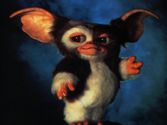
Although some may assert that gremlins are not animals, there’s something decidedly pet-like about the pint-sized and huggable Gizmo. Known for his resonant singing abilities, his piano-playing skill, and his odd purring noises, he became the most desirable fictional pet for any children of the 1980s. Despite being a member of the gremlin species, he was also crucial in defeating the mastermind of the “evil” gremlins, since he was clever enough to engineer a pulley system and operate kitchen devices. Gizmo’s charm is perhaps the most memorable thing about the character, transcending his animatronic design to deliver a believable and lovable performance. And if ticket sales aren’t enough to prove the popularity of this mogwai, then one must only look at the sheer volume of plush toys and dolls made in Gizmo’s likeness.
Origin: Gremlins | First Appearance: June 8, 1984 | Physical Description: A small, fur-covered creature with pronounced ears and mammalian features. | Why They Mattered: Saved Billy (and by extension, the nearby town) from the wrath of rogue gremlins. | Human Companion: Billy Peltzer | Fun Fact: Howie Mandel, most recently known for his hosting role on Deal or No Deal, was the voice of Gizmo.

Whether you played the Gameboy titles, traded the cards, or watched the animated series, there’s little doubt that you haven’t encountered this yellow ball of static at least once in your life. Pikachu was one of the most adored and sought-after Pokemon in the entire series, likely due to his famous bond with the trainer Ash. Children of the 1990s will have no trouble remembering the squeaks and pips of Pikachu, and as most can tell you, the character’s appeal only grew as Pikachu expanded into other media forms. Video games featured the yellow brawler as their cover, films turned Pikachu into a hero in their own right, and waves of holographic cards cemented the character’s legacy as an adorable but powerful asset in any player’s deck. To this day, no reboots of the Pokemon television series have been bold enough to cut out this fan favorite.
Origin: Pokemon Red and Blue | First Appearance: February 27, 1996 | Physical Description: A vaguely rodent-like creature with yellow skin, rosy cheeks, and a xigzag tail, often wreathed in electrical power. | Why They Mattered: Accompanied the Pokemon trainer Ash throughout his entire career as a duelist, and often served as the trainer's frontline warrior. | Human Companion: Ash Ketchum | Fun Fact: Pikchu's name combines two onomatopoeic Japanese words: "pika," which describes electrical fizzing, and "chu," resembling a mouse's squeaking.
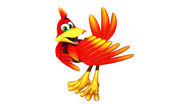
It’s easy to see how Kazooie could have been a forgettable tool for Rare Limited’s game developers. Many platform-based N64 titles relied on pets as little more than transportation methods, and a few featured them as even less-involved plot elements without any dialogue or emotion. Banjo Kazooie was one of the first titles to combine the rider and mount into a single entity, expecting the birdlike Kazooie to work in tandem with the bearlike Banjo in every one of its levels. Kazooie was more than an attack and movement partner, however. She was a source of comedic relief, a counter to Banjo’s innocent personality, and a contortionist capable of squeezing into the world’s smallest backpack. Although Kazooie never spoke – not in a human language, anyway – she was one of the most expressive characters in the N64 lineup.
Origin: Banjo Kazooie | First Appearance: June 29, 1998 | Physical Description: A red and yellow bird with long, thin legs, a head crest, and plumage resembling a mythical phoenix. | Why They Mattered: Assisted Banjo in his rescue efforts and enabled him to overcome impossible barriers, often by increasing his companion's speed and jumping abilities. | Human Companion: Banjo | Fun Fact: Despite being named after the kazoo, a real-world instrument, Kazooie is only shown playing an instrument which resembles a bugle.

In most media depictions, a dog is a loyalty and steadfast companion, eager to provide love and comfort in any situation. In Seth Macfarlane’s animated hit Family Guy, however, the dog is an atheist cynic with relationship and drinking problems. Brian lent the show a sense of realness and witty commentary, even if the rest of the Griffin family was designed to be a panel of oddities and over-the-top humor. His mishaps with Stewie formed some of the show’s most legendary plot arcs, and also created one of the strangest (but most effective) dog-and-human relationships in modern entertainment. Whether it’s his sarcastic delivery, his love of Frank Sinatra, or his closeness to Seth Macfarlane’s true personality, Brian is one of the most beloved and adoption-worthy characters in animated comedy.
Origin: Family Guy | First Appearance: January 31, 1999 | Physical Description: A white-haired, bipedal dog with a red collar and flopping ears. | Why They Mattered: Provided a voice of reason and logic to an otherwise nonsensical family, typically by offering financial or moral advice. | Human Companion: Stewie Griffin | Fun Fact: Brian was the first Family Guy character to make an appearance in Seth Macfarlane's other animated project, American Dad.
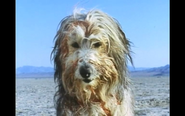
Harlan Ellison’s vision of a post-apocalyptic world is curious and bleak, but most of all, it’s bizarre beyond measure. Blood, a telepathic Australian sheepdog with a constant need for food, was the perfect match for his woman-craving owner, Vic. In A Boy and his Dog, the pair roamed across a devastated world, trading human faculties for canine senses in a bid to survive the wasteland and mutually profit. Blood was a level-headed, rational creature with a critical eye for his master’s habits, and proved instrumental in finding and seeking out an underground utopia. While Blood and Vic’s bond may have seemed like a superficial relationship to outsiders, the depth of connection was later revealed in one of cinema’s most absurdly comedic scenes of cannibalism. Blood’s role as a scavenger and survivor was lauded by both readers of the original stories and viewers of the film, and the fascination can be explained with Vic’s final words in the novella: “A boy loves his dog.”
Origin: A Boy and His Dog | First Appearance: April, 1969 | Physical Description: A long-haired, white Australian sheepdog with barely-visible eyes | Why They Mattered: Possessed the extraordinary gift of telepathy, enabling him to join his human companion in post-apocalyptic scavenging and philosophical debates | Human Companion: Vic | Fun Fact: The dog actor who played Blood entered the film world on The Brady Bunch, where he played the family's dog (Tiger).
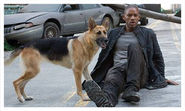
Simply mentioning an animal companion in a film is enough to make a grown man cry, provided they’ve seen I am Legend. Many post-apocalyptic films and novels feature a dog as the protagonist’s sidekick, but few were able to create the bond shared by Will Smith’s character and his canine confidant. For the first half of the film, the audience grew attached to Sam by watching their daily routine, including treadmill exercise alongside Dr. Neville and tinned tomato products. Even without speaking, Sam became an integral part of the story, and Neville’s last connection to a lost family and civilization. Years after the film’s release, most people have probably forgotten the details of the plot – but no dog lover will ever Will Smith singing a final song to Sam.
Origin: I Am Legend | First Appearance: December 14, 2007 | Physical Description: A dark-haired German shepherd with cropped ears and a muscular frame. | Why They Mattered: Served as Dr. Neville's only confidant and fellow living creature after the outbreak of a crippling disease. | Human Companion: Robert Neville | Fun Fact: While Sam is a significant part of I Am Legend's film adaptation, the dog found in Richard Matheson's original novel appears, becomes infected, and dies within the span of a few chapters.
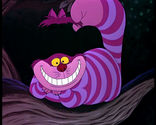
In most modern tales, anything with piercing eyes, massive fangs, and a penchant for tree-slinking is likely to be a murderous creature. But for Lewis Carroll, the Cheshire Cat was a fond and riddle-loving introduction to the world of Wonderland, greeting Alice and accompanying her through her strange journey as a sort of ever-present guide. The Cheshire Cat’s trademark stripes and haunting grin have been immortalized in various film interpretations, as well as American McGee’s Alice, a series of video games which take Wonderland in a sinister new direction. As one might imagine, the Cheshire Cat and its devilish smile require little tweaking to exist in such a story. Whether viewed as a light-hearted trickster or a nightmare-inducing predator, the Cheshire Cat is one of the most famous animal characters to ever emerge from British literature.
Origin: Alice's Adventures in Wonderland | First Appearance: November 26, 1865 | Physical Description: A long, striped cat with a wide, toothy grin, commonly paired with expressive (and crazed) eyes. | Why They Mattered: Guided Alice through her various tribulations and riddles in Wonderland, often taunting or seeking to aid the girl. | Human Companion: Alice | Fun Fact: Although Lewis Carroll popularized the Cheshire Cat, there are a large number of cultural references and art pieces predating Alice's Adventures in Wonderland.
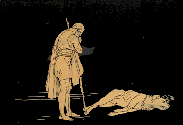
Everlasting dedication is one of the traits most commonly desired in a dog, and Argos was the originator of this ideal in literature. His owner, Odysseus, left for a 20 year adventure around the world, which left the dog to a life of neglect and starvation. After Odysseus’ home was filled with suitors for his mother, Argos was further shut away from everyday life, but refused to abandon hope of his master’s return. When Odysseus finally appeared at the palace incognito, he shared a final and heartbreaking moment of recognition with Argos, which allowed the dog to finally die after decades of faithful waiting. An updated homage to Argos marked a rare moment of seriousness on the animated show Futurama, where a dog waited decades – without success – for the return of its master. While these dogs may be fictional, their determination and commitment live on in society’s image of the “ideal companion.”
Origin: The Odyssey | First Appearance: 7th Century BC | Physical Description: Never recorded, aside from basic canine features. | Why They Mattered: Demonstrated exceptional loyalty to his master, remaining alive and vigilant for decades after Odysseus' disappearance. | Human Companion: Odysseus | Fun Fact: While the dog's exact age was never revealed, the length of Odysseus' disappearance makes Argos well over 20 years old.
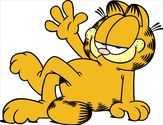
One does not need to be a cat lover to enjoy the Garfield section in the Sunday paper. In fact, those who despise cats are an equally valid audience for these comic strips. Garfield is one of the most cynical and blunt animal characters in comedy, and his passionless humor – which often stuck out in sharp contrast to his dog companion, Odie – was ultimately what drove his success. Despite the outward appearance of apathy from the lasagna-addicted cat, there were many layers to Garfield’s personality and disposition, and it often came out through a deep love of food. Garfield has another reason to be the centerfold of every cat fan’s calendar: he was one of the progenitors of “intelligent” cats in animation and media. In fact, according to creator Jim Davis, he was conceived to offer competition to a slew of canine counterparts.
Origin: Garfield | First Appearance: June 19, 1978 | Physical Description: An orange-haired tabby cat with a round figure and oversized paws. | Why They Mattered: Brought a sense of cynical and deadpan humor to comic strips and animated TV. | Human Companion: Jon Arbuckle | Fun Fact: Garfield's sardonic personality was modeled after creator Jim Davis' grandfather, James Garfield.

This collie is, without a doubt, one of the most well-known and idolized dogs in fiction. With a legacy spanning books, radio plays, films, and television programs, Lassie was the quintessential rescue dog, and performed so many heroic duties that she practically became a trope. While a great number of children were saved from the bottoms of wells due to this dog’s heroism, several films explored Lassie’s more “eclectic” side, including battlefield forays and experiences with the legal system. Lassie also represented one of the first superstars to emerge from the world of animal companions, proving that readers and viewers were willing to watch an animal-centered show as long as its characters and plots were compelling enough. Lassie’s fame endures in the world of dog naming, where millions of collie owners reach for the name out of tradition alone.
Origin: The Half-brothers (short story) | First Appearance: 1859 | Physical Description: A rough collie with a white mane and similarly-colored paws. | Why They Mattered: Rescued countless children from the bottoms of wells, the freezing cold, and even Nazi-occupied territory. | Human Companion: Varying, most famously Joe Carraclough | Fun Fact: After the death of Lassie's original actor, Pal, new actors were found among the collie's children and grandchildren.

Although Epona falls into the video game category of “animal companion as transportation,” the Legend of Zelda was clever in how it presented Link’s treasured horse. In her earliest forms, Epona was a simple and often nameless horse. The N64’s Ocarina of Time, however, was quick to change that dynamic. Rather than having the player purchase Epona as a nameless and forgettable method of swift travel, the game forced the player to compete in a series of trials to simply win the horse, creating an automatic bond through the shared gauntlet. Epona came equipped with a rich and detailed backstory, which could be assembled and understood by Zelda fans which had played multiple titles in the series. Epona was also one of the earliest examples of a persistent animal companion in the 3D world of gaming, making her feel more alive and realistic than creatures like Yoshi.
Origin: The Legend of Zelda: Ocarina of Time | First Appearance: November 21, 1998 | Physical Description: A chestnut-colored horse with a set of grayish hooves and a white mane, usually depicted with an affixed saddle. | Why They Mattered: Assumed the role of Link's closest friend, and also acted as his trustworthy steed in battle and peacetime. | Human Companion: Link | Fun Fact: Epona, a goddess within the Gaulish pantheon (and found in Roman circles), represented horses, mules, donkeys, and fertility.
